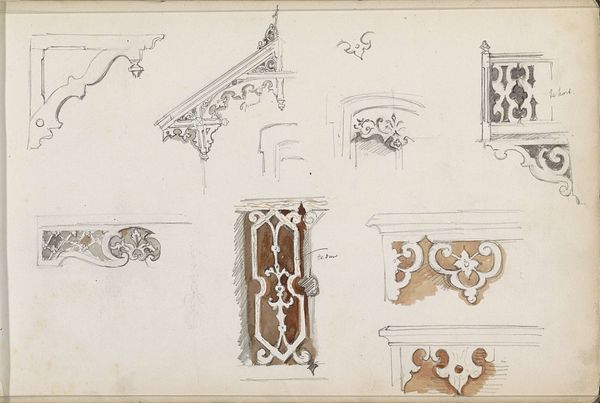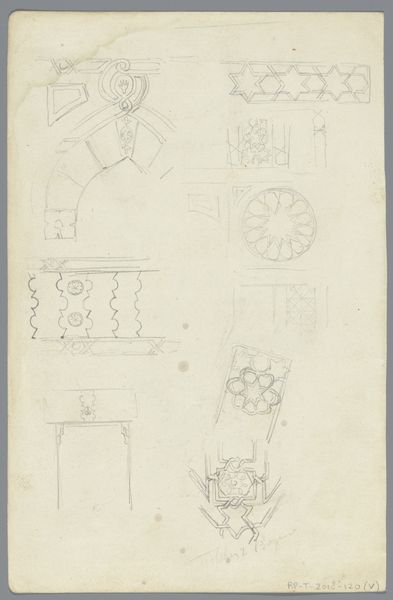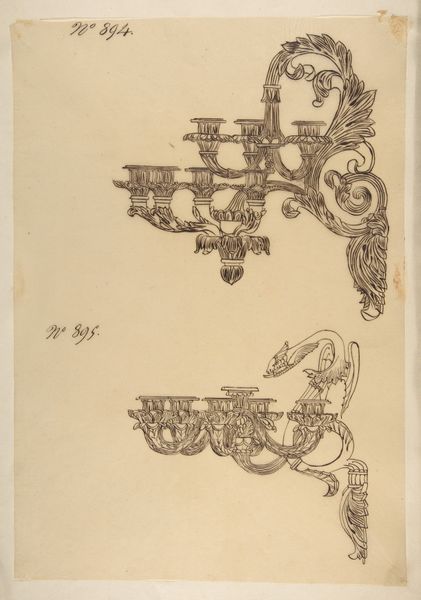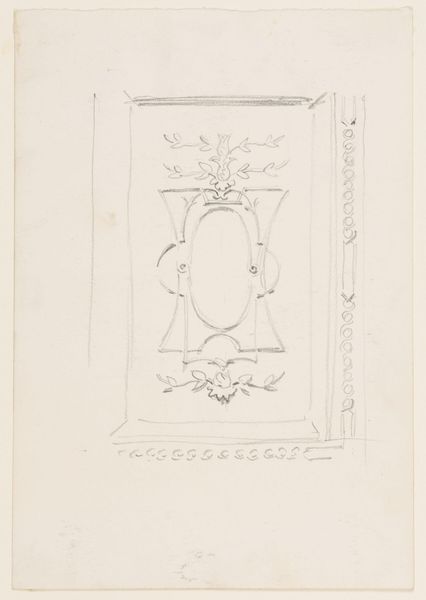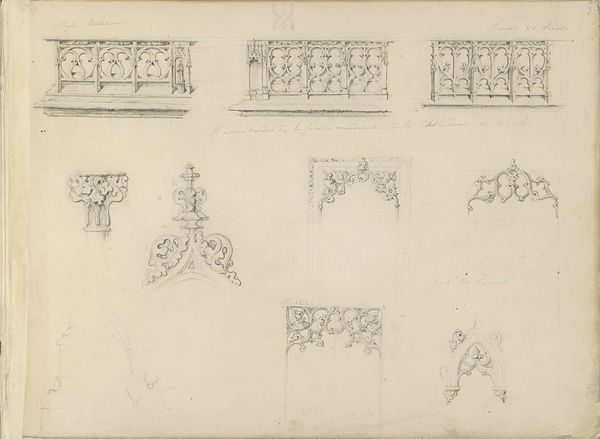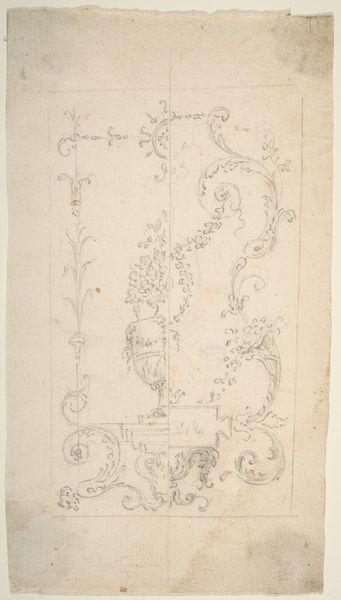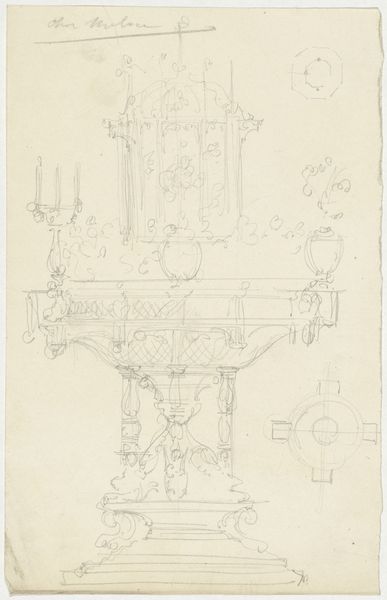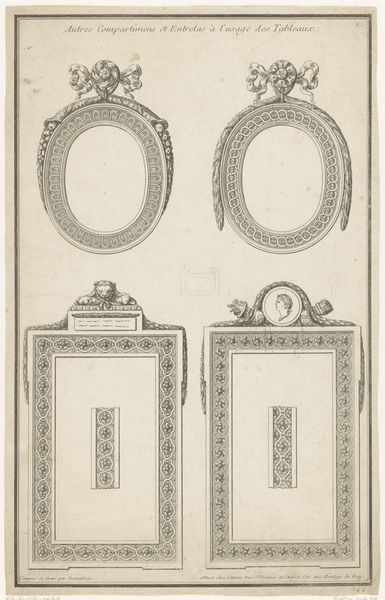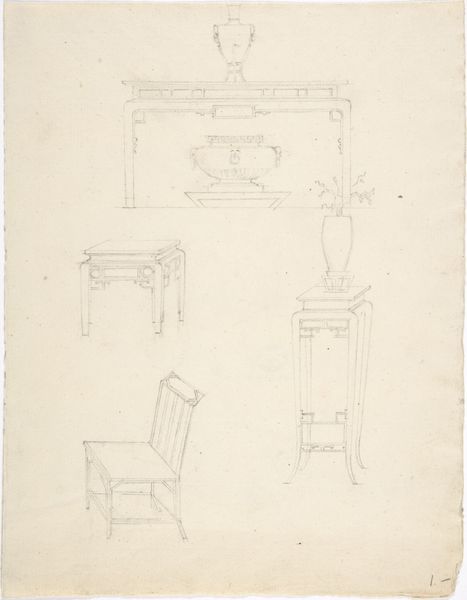
Copyright: Rijks Museum: Open Domain
Curator: Looking at Adrianus Eversen’s "Architectuurstudies," dating from around 1828 to 1897, done in pencil on paper, the first impression is quite intimate. It feels like peeking into the private thoughts of the artist. Editor: Yes, there’s a fragility and quietness to the sketch-like quality that really draws me in. But what strikes me more is the context; during this period, urban spaces were being heavily reimagined through Neoclassical ideals. What did architectural drawing represent during this era? Curator: Precisely. Architecture, especially Neoclassicism, embodied power structures of the time, reflecting colonial aspirations through imposing, symmetrical forms. A drawing like this offers a look into the architectural landscape. Eversen's studies showcase potential symbols of domination or perhaps the sketching translates into questioning those same principles? Editor: It’s interesting to consider the sketchbook itself as a subversive space. Neoclassicism frequently erased local and indigenous forms, it presented what we often considered rigid perspectives that are always from a dominant (masculine, European) lens. By showing this preliminary stage we understand the many attempts at constructing architectural space and, thus, can be challenged and re-worked. It really underscores the political and aesthetic power at play in even a preliminary sketch. Curator: And note the intimacy of the medium. The simple pencil line creates a record. But beyond technique, it is the subject matter. Notice the columns, arches and human figures. Editor: All suggestive, rather than declarative. They're impressions. The scale and presentation of these elements offer a challenge to typical, gendered Neoclassical values. The loose application emphasizes instead the temporary nature of architectural intention, while also celebrating, simultaneously, human construction and mark-making. Curator: Agreed. Eversen's sketch isn't just a record; it invites dialogue around architecture's impact and asks how we might disrupt that framework. Editor: Absolutely, these fleeting glimpses offer an opportunity to really rethink about the narrative and socio-historical context that defines what, at first, just looks like another architectural drawing.
Comments
No comments
Be the first to comment and join the conversation on the ultimate creative platform.
